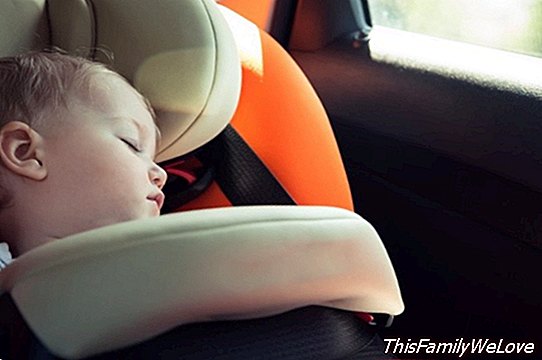5 recommendations for traveling with babies

Traveling during the holidays is a pleasure for many families and, when the little one in the house is a baby, there is no need to forego travel if the necessary precautions are taken. According to the World Association of Early Childhood Educators (AMEI), babies can start taking short trips after three or four months of age.
Road safety and attention to child care are two essential aspects so that the first visits to the beach or the countryside are a success. Every precaution is small, taking into account that traffic accidents are the first cause of infant mortality due to injuries and also cause many disabilities.
5 tips for safe travel with your baby
Coinciding with the arrival of vacations and the operations that will be happening during the summer months, the World Association of Early Childhood Educators (AMEI-WAECE) launches a set of recommendations to make traveling with babies safe:
1. Short trips: the duration of the trips must be short in the first trips. As the months go by, the journeys can progressively lengthen. however, on long trips, it is appropriate to make stops every 200 kilometers at the most to stretch your legs, drink some liquid and play with the child. This helps the driver maintain attention and not get distracted while driving. If the two members of the couple drive, it is convenient to take turns so that neither of them gets tired.
2. Use the parents' car: the best means of transportation for a child is the parents' car. In this way the family gets more autonomy, makes sure to move all the necessary luggage and makes the appropriate stops. When the child travels in the vehicle of other adults, parents should check that safety measures are followed. If the car in which you travel does not have a chair, you can place the one of the parents, although if this situation occurs frequently, it is more convenient to buy a specific chair for those occasions.
3. Guarantee the safety of the vehicle: guarantee a good trip, without negative consequences, is the most important. To achieve this, the driver must face the journey with peace of mind, make a review of the car before embarking on the trip to have guarantees that all its components are in optimal conditions, not to set a time of arrival and drive with serenity.
Five-door cars are preferable for babies and children, since three-door cars are uncomfortable to sit small children behind and adjust the harness or safety belt correctly. On the other hand, it is very difficult to quickly remove the child from the car in case of emergency and, in many small vehicles, frontal and lateral impact tests do not guarantee the safety of the occupants. In addition, in summer, it is necessary to check the interior metallic areas of the car to which the child can access, to avoid burning when touched. It is never early to teach children to behave prudently.
4. Securely fasten children with safety seats: A child should never travel in a vehicle that does not have the approved restraint mechanisms. Although parents are tempted to carry the baby in their lap, it is demonstrated that, at a speed exceeding fifty kilometers per hour, an adult is unable to hold the child in the event of a sudden braking. Therefore, you should always travel with safety devices appropriate to your age and weight.
When buying a safety seat, keep in mind that the chosen model complies with official regulations and homologation laws. It is convenient to choose a model with headrest and that the harness fits easily and solidly. Never have to rush the use of the safety seat when it starts to stay small. If it suffers a sharp blow, it is necessary to check carefully that it has not deteriorated.
On the other hand, from the first day, the child must travel in the back seat. To avoid cervical injuries, the saddle must be oriented counter-march on creatures under 18 Kg and up to approximately four years. If both parents travel with the child, the one who does not drive can sit on the back to meet the child's needs.
5. Prevent dizziness: Babies under the age of one do not usually get dizzy because they have not yet matured sufficiently the sense of balance that is located in the semicircular canals of the inner ear. In addition, babies focus their eyes on objects and people who are close to their field of vision and do not pay much attention to what happens outside the car.
However, after twelve or fourteen months, children love to look out the windows. If, in doing so, the images they see pass quickly and in the opposite direction, they overstimulate their vestibular apparatus and suffer from dizziness.There are children more prone to dizziness than others, but it is convenient in all cases to observe symptoms such as cold sweat, sudden pallor, increased breathing rate, exaggerated production of saliva or yawning without the suspicion that they are sleepy, because they are indications that they may be feeling dizzy.
To avoid these unpleasant situations and if the child is prone to dizziness, from twelve or fourteen months it is advisable to put the car seat in a straight position in the middle part of the back seat, in the direction of walking and trying to attract the attention of the child. child to focus on the front of the car.
Robert Sendra
Advice: World Association of Early Childhood Educators (AMEI-WAECE)




